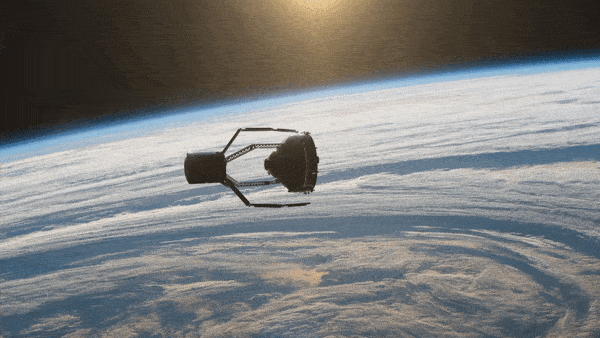
The target for a space debris cleanup mission is apparently in pieces.
A leftover rocket adapter, expected to be removed from low Earth orbit in 2026, has new pieces of space debris floating nearby. That's a likely aftereffect of being hit by something small flying through space. The problem was spotted by the 18th Space Defense Squadron of the U.S. Space Force, which monitors satellite movements.
That's an unexpected event for the European Space Agency's ClearSpace-1 mission, which is a planned test mission to remove that adapter in 2026. The adapter is a conical-shaped leftover, roughly 250 pounds (113 kg) in mass, from a 2013 Vega launch that sent a small fleet of satellites into orbit. Space tracking systems found new objects nearby the adapter, which ESA learned about on Aug. 10. The objects are likely space debris from a "hypervelocity impact of a small, untracked object" that smacked into the payload adapter, the agency said. We may never know if the crashing object was natural or artificial, given it didn't appear in tracking systems.
Related: Space junk cleanup mission to launch in 2026 aboard Arianespace rocket
"This fragmentation event underlines the relevance of the ClearSpace-1 mission," ESA officials wrote in a statement Tuesday (Aug. 22). "The most significant threat posed by larger objects of space debris is that they fragment into clouds of smaller objects, that can each cause significant damage to active satellites."
While it appears only a small piece of the rocket hardware was lost after the collision, the mission plan assumed fully intact hardware. Now evaluations are ongoing to figure out what's next, and the analysis will persist for weeks at the least.
The planned ClearSpace-1 mission aims to "rendezvous, capture and remove" the adapter using a spacecraft from the Swiss startup ClearSpace, according to a recent release from mission partner Arianespace. A lightweight Vega-C rocket from Arianespace will bring the cleanup spacecraft to orbit under the ESA-funded mission.
The plan calls for ClearSpace's spider-shaped vehicle with "legs" to enclose and then push back into Earth a payload adapter, which is the structure that connects spacecraft with their launch vehicle.
With the planned launch of ClearSpace-1 three years away, there is time to figure out what to do. But the incident creates even more uncertainty for an already challenging mission. There is only so much ground stations can see above the orbit of the International Space Station; the original payload adapter was only six feet or two meters in diameter and at an altitude only as low as 410 miles (660 km).
Luckily, however, follow-up tracking from the U.S. Space Force and other stations in Germany and Poland found "the main object remains intact and has experienced no significant alteration to its orbit," ESA said. And happily, the risk of these new objects hitting something else is "negligible."
Space debris from humans will take a while to address. Nearly 70 years of space exploration has left a staggering number of pieces to deal with. ESA estimates that Earth orbit has at least 36,500 debris objects that are more than 4 inches (10 centimeters) wide. Including the smallest trackable objects, that number balloons to an incredible 330 million objects bigger than 0.04 inches (1 millimeter).







